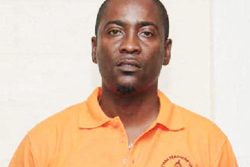Dear Editor,
Royden ‘Smallie’ Williams lived by fire, and when he was felled by fire not many in Guyana shed a tear, felt a pang of pain. His family did, and that’s what families are for, through good times and bad times. But now, in the enduring mystery that Smallie Williams will become, and the subject of many of the open-ended and unending conversations that locals live for and love, there is one more fire that took care of his remains, with three questions emerging: Why? Why go to that particular place, make that choice of cremation for his final goodbye? Why add controversy to what was already shaping up to be nothing but controversy?
It is said that dead men have nothing to tell, to give, or to share. I believe in those truths up to a point. The manner in which they died, sometimes, is what reveals more about them (and those whom they befriended, [or befriended them] when they leave this earthly pale. I will now say this, which should be obvious by its telling simplicity, that swift cremation, official going against the wishes of the family, share a straightforward tale, which can withstand any argument. It is that forensic examination of ashes only gives so much. Though there has been no word on the disposition of the ashes, I would hope that the State did not cast them into the ocean with the same rapidity with which the cremation was conducted.
The family say ‘no’ to cremation, yet there was this insistence that the State had jurisdiction over the body. I think that it is customary for families to view postmortems, but that was allowed for all of 10 minutes only, per media reports. I am struggling to grasp the reasons for this official stubbornness, this wall erected to thwart the family’s wishes. What does not add up, smells. The newest piece of information is that the family noticed what they called ‘suspicious marks’ on the body. This will only add to the legend and notoriety of the late ‘Smallie’ Williams, mass murderer, death row tenant, and maximum-security prison escapee.
Now with the media (SN) publishing this latest development about his rushed cremation, and the surrounding circumstances, new worms make their way to the surface, where they eat away at consciousness and consideration. Perhaps that was an unwitting product of tension-filled circumstances; or it could more likely be part of the settled norm, what is now the uncaring culture. So what, who is going to do us (State officers) anything?
The Hon. Attorney General of Guyana is reported to have had no issue with the release of the body to the family for a proper burial, but then walked back his words with the now comforting narrative of the State having jurisdiction over the body, and subjected to this tug of war. Another question: what pushed and what pulled the learned Attorney General to change his fertile, top-shelf mind?
What is highly enlightening is the adamant stance of the Guyana Prison Service (GPS). No body to be handed over. No burial to be done. This business about ‘suspicious wounds’ and cremation following on the heels of that possibly keen discovery adds another layer of mystery to the several mysteries that were already swirling. A tense and frightened nation heard about a “confrontation” and then an “exchange” and about men now dead from that fateful encounter. The first accomplice shot and killed was inexplicably unhandcuffed, somehow helped himself to a firearm (more of the unfathomable), and was downed in a small fusillade of bullets. In the instance of Smallie Williams’ and another man’s departure, all the nation has been privy to is what has been fed to it by State actors. Now we have the GPS entering the picture and effectively closing out all further interrogations from anyone into anything surrounding the death of this notorious escapee.
What is meant by ‘suspicious wounds?’ How suspicious is suspicious? What more could the family have observed if allowed to be present throughout the entire postmortem? Was the cremation in a hurry to take care of loose ends that could be the source of endless scrutiny and inquiry at a later date? And how often is cremation part of the GPS’ protocol for fallen inmates, escapees, and others that fall into its hands?
The death of Smallie Williams could have been like that proverbial tree tumbling to its final resting place in the middle of the deep, dark forest. That is, an event of less than particular interest or consternation. This hasty cremation, and all the nettlesome vines around it, is an altogether different story. It is not a clean one.
Sincerely,
GHK Lall





